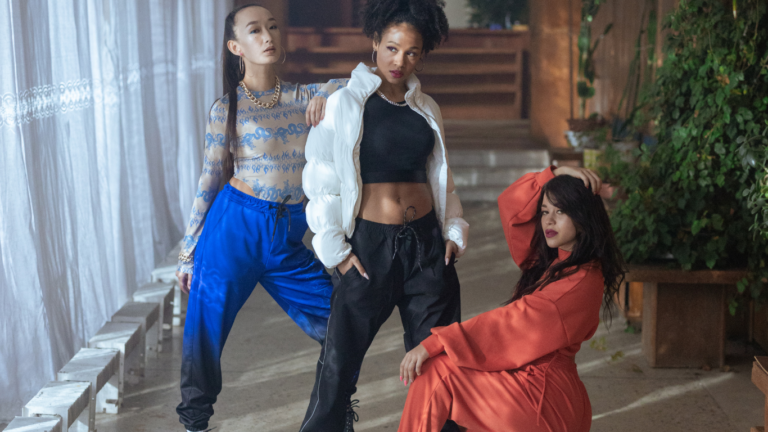The History of Digital Fashion
Digital fashion has a fascinating history, with roots tracing back to the early adoption of technology in the fashion industry. Let’s explore the early developments and key milestones that have shaped this evolution.
Early Developments
Computer-Aided Design (CAD) systems emerged in the 1960s, revolutionizing the fashion design process by enabling designers to create patterns on computers. In the early 1990s, companies like Adobe introduced software such as Photoshop and Illustrator, which became standard tools for digital sketching and pattern design. These early advancements laid the groundwork for more sophisticated digital fashion technologies.
- Virtual Fashion Shows: In 2010, Burberry launched the first live-streamed fashion show, setting a precedent for virtual fashion presentations.
- 3D Design Software: The mid-2010s saw the rise of 3D design software like CLO 3D and Browzwear, simplifying virtual garment creation and rendering.
- Digital-Only Collections: In 2018, Carlings released a digital-only collection, allowing consumers to “wear” virtual garments on social media.
- AR and VR Integration: By 2020, augmented reality (AR) and virtual reality (VR) became integral in fashion retail, with brands offering virtual try-ons and immersive shopping experiences.
These milestones demonstrate how digital fashion has continually evolved, integrating new technologies to enhance design, production, and consumption.
Technology’s Impact on Fashion Design

Technology significantly reshapes fashion design, bringing about rapid changes and innovative approaches.
Software Tools and Applications
Software tools revolutionize design processes. Programs like Adobe Photoshop and Illustrator enable detailed sketches and renderings, enhancing creativity and precision. CAD software, used since the 1960s, streamlines pattern-making and garment construction.
CLO 3D and Browzwear create realistic 3D garment simulations, offering designers the ability to see and adjust fits before production. Marvelous Designer allows designers to experiment with patterns and fabrics digitally, improving efficiency and reducing waste. These tools enhance collaboration among global teams, making design processes more coherent and integrated.
AI and Machine Learning
AI and machine learning personalize fashion design. Algorithms analyze consumer preferences, helping designers predict trends and tailor collections. Generative design, powered by AI, creates multiple design iterations based on specified criteria, saving time and resources.
Machine learning models analyze vast datasets to provide insights into fabric choices, color schemes, and styles that resonate with target audiences. AI-driven platforms like IBM’s Watson collaborate with fashion brands to create data-driven designs. These technologies enhance creativity while incorporating consumer-driven insights into the design process.
Digital Fashion in Retail
Technology is transforming retail, especially through digital fashion. Retailers use advanced tech to enhance customer experience and streamline operations.
Virtual Try-Ons
Digital fashion pioneers virtual try-ons, enabling customers to visualize clothing without wearing it. Retailers like Zara and H&M integrate virtual fitting rooms, boosting engagement. Virtual try-ons use Augmented Reality (AR) and machine learning to map clothing onto customers’ images. This reduces returns and increases satisfaction. Warby Parker offers an AR tool letting users see eyewear on their faces, exemplifying successful virtual try-ons.
Augmented Reality Shopping
Augmented Reality (AR) shopping elevates retail, offering interactive experiences. Brands like IKEA and Sephora employ AR to let customers view products in real life. AR apps superimpose digital items onto real-world views via smartphones. Retailers benefit from increased sales and engagement. For fashion brands, AR facilitates trying accessories and outfits virtually, bridging the gap between online and offline shopping.
The Role of Social Media
Social media platforms play a pivotal role in the rise of digital fashion, creating new opportunities for brand engagement and customer interaction.
Influencers and Digital Clothing
Influencers significantly impact digital fashion by promoting digital clothing on social media platforms like:
- TikTok
High-profile influencers like Bella Hadid and Lil Miquela often don virtual outfits, showcasing their intricacies and generating buzz. Customers find digital fashion more accessible as these influencers bridge the gap by integrating digital clothing into their posts. Additionally, digital clothing brands collaborate with influencers, leveraging their reach to introduce new collections to a broader audience.
Virtual Fashion Shows
Virtual fashion shows redefine how we experience fashion events. Leading brands like Balenciaga and Gucci have hosted immersive virtual shows, eliminating geographical and logistical constraints.
These shows create a more inclusive environment, allowing audiences from around the globe to participate via platforms like YouTube and Instagram Live. Virtual fashion shows also offer innovative presentation methods, such as 3D models and interactive stages, enhancing audience engagement and providing unique viewing experiences.
Sustainability and Digital Fashion
The adoption of digital fashion is transforming sustainability practices within the industry. By leveraging technology, the fashion sector is addressing critical environmental concerns.
Reducing Waste
Digital fashion significantly reduces waste by eliminating the need for physical samples. Traditional fashion generates substantial waste through fabric scraps and unsold inventory. Virtual garments (e.g., 3D-rendered outfits) eliminate these issues by existing solely in digital form. Brands can showcase entire collections online without producing a single physical item, drastically cutting down on textile waste and physical storage requirements.
Ethical Considerations
Digital fashion also addresses ethical considerations in the supply chain. Conventional fashion often involves unethical labor practices, like low wages in developing countries. By moving to digital design and manufacturing processes, brands can reduce or eliminate the reliance on sweatshops and other exploitative labor practices. Additionally, digital fashion can be produced instantly, eliminating the long lead times and intensive labor practices associated with traditional garment production.
The Future of Digital Fashion
Digital fashion is evolving rapidly, driven by technological advancements and changing consumer behaviors. Emerging trends and potential challenges define the industry’s future landscape.
Emerging Trends
Several emerging trends are shaping digital fashion’s future. Virtual fitting rooms enhance customer experiences, offering accurate size recommendations and reducing returns. Digital showrooms allow brands to showcase collections without physical samples, fostering sustainable practices.
Blockchain technology ensures transparency in supply chains, verifying the authenticity of luxury items and combating counterfeiting. Artificial Intelligence (AI) and machine learning improve design processes, predicting consumer preferences and automating repetitive tasks. Smart textiles integrate technology into fabrics, creating innovative garments with functionalities like temperature regulation and health monitoring.
Potential Challenges
Despite its growth, digital fashion faces several challenges. High development costs limit access to advanced technologies for smaller brands. Digital divide issues prevent some consumers from accessing AR and VR experiences, creating inequality in the market.
Data privacy concerns arise from the extensive collection of personal information needed for customized digital experiences, demanding stringent regulations. Technological interoperability across platforms remains complex, hindering seamless integration and user experience. Sustainability, though improved by digitalization, still faces scrutiny regarding the environmental impact of electronic waste and energy consumption.
Emerging trends drive innovation in digital fashion, but addressing challenges is crucial for sustainable growth and broad adoption.






































































 Luxury Travel & Lifestyle Contributor
Rose Boucher brings her love for glamorous travel destinations and luxury living to Glam World Walk. As a lifestyle writer, Rose captures the essence of exotic locations and exclusive experiences, offering readers a taste of the world’s most luxurious getaways. Her expertise in finding hidden gems, coupled with a deep understanding of fashion and culture, adds a unique flair to the site’s content, making her a trusted voice for those seeking elegance in every adventure.
Luxury Travel & Lifestyle Contributor
Rose Boucher brings her love for glamorous travel destinations and luxury living to Glam World Walk. As a lifestyle writer, Rose captures the essence of exotic locations and exclusive experiences, offering readers a taste of the world’s most luxurious getaways. Her expertise in finding hidden gems, coupled with a deep understanding of fashion and culture, adds a unique flair to the site’s content, making her a trusted voice for those seeking elegance in every adventure.
